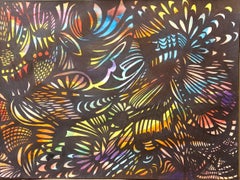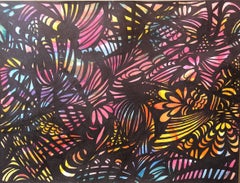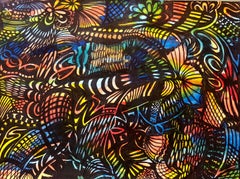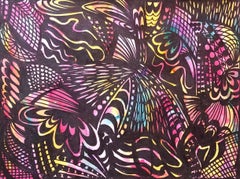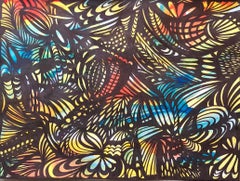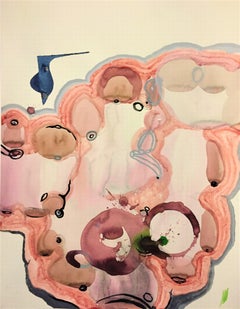Dorothy Gillespie Abstract Drawings and Watercolors
Early 2000s Abstract Expressionist Dorothy Gillespie Abstract Drawings and Watercolors
Paper, Ink, Watercolor, Permanent Marker
Early 2000s Abstract Expressionist Dorothy Gillespie Abstract Drawings and Watercolors
Paper, Ink, Watercolor, Permanent Marker
Early 2000s Abstract Expressionist Dorothy Gillespie Abstract Drawings and Watercolors
Paper, Ink, Watercolor, Permanent Marker
Early 2000s Abstract Expressionist Dorothy Gillespie Abstract Drawings and Watercolors
Paper, Ink, Watercolor, Permanent Marker
Early 2000s Abstract Expressionist Dorothy Gillespie Abstract Drawings and Watercolors
Paper, Ink, Watercolor, Permanent Marker
1980s Abstract Expressionist Dorothy Gillespie Abstract Drawings and Watercolors
Permanent Marker
2010s Abstract Expressionist Dorothy Gillespie Abstract Drawings and Watercolors
Conté, Permanent Marker, Oil Pastel, Paint, Graphite, Watercolor, Temper...
1980s Abstract Expressionist Dorothy Gillespie Abstract Drawings and Watercolors
Ink, Watercolor, Permanent Marker, Mixed Media
1950s Abstract Expressionist Dorothy Gillespie Abstract Drawings and Watercolors
Permanent Marker, Graphite, Mixed Media
2010s Abstract Dorothy Gillespie Abstract Drawings and Watercolors
Paper, Acrylic, Watercolor, Permanent Marker, Color
2010s Abstract Dorothy Gillespie Abstract Drawings and Watercolors
Paper, Acrylic, Watercolor, Permanent Marker, Color
1960s Abstract Expressionist Dorothy Gillespie Abstract Drawings and Watercolors
Paper, Gouache, Pen
1980s Abstract Expressionist Dorothy Gillespie Abstract Drawings and Watercolors
Dye, Handmade Paper, Mixed Media, Permanent Marker
2010s Abstract Dorothy Gillespie Abstract Drawings and Watercolors
Paper, Acrylic, Watercolor, Permanent Marker, Digital
1960s Abstract Expressionist Dorothy Gillespie Abstract Drawings and Watercolors
Paper, Watercolor, Pen
2010s Abstract Dorothy Gillespie Abstract Drawings and Watercolors
Paper, Acrylic, Permanent Marker, India Ink
2010s Abstract Expressionist Dorothy Gillespie Abstract Drawings and Watercolors
Paper, Ink, Watercolor
Early 2000s Abstract Expressionist Dorothy Gillespie Abstract Drawings and Watercolors
Paper, Ink, Watercolor, Permanent Marker
Early 2000s Abstract Expressionist Dorothy Gillespie Abstract Drawings and Watercolors
Paper, Ink, Watercolor, Permanent Marker
Early 2000s Abstract Expressionist Dorothy Gillespie Abstract Drawings and Watercolors
Paper, Ink, Watercolor, Permanent Marker
Early 2000s Abstract Expressionist Dorothy Gillespie Abstract Drawings and Watercolors
Paper, Ink, Watercolor, Permanent Marker
Early 2000s Abstract Expressionist Dorothy Gillespie Abstract Drawings and Watercolors
Paper, Ink, Watercolor, Permanent Marker
